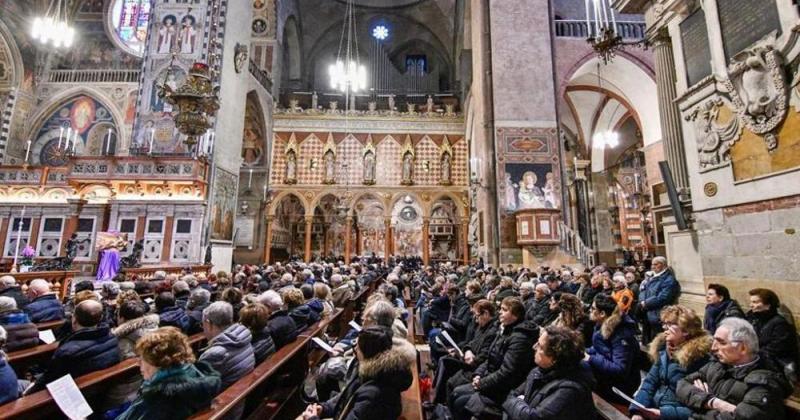“You do not pay for the Mass, if you want you can make an offering, do it but you don’t need to pay for the Mass”. Pope Francis, in the audience hall in the Vatican, raises his gaze from the prepared speech and speaks off the cuff to the faithful. The subject of his catechesis is the Eucharistic prayer, the heart of the Mass, which accompanies the consecration of the bread and wine. It is an opportunity to remember that there can be no “price-list” for the sacraments and that not even the suffrage Mass for the deceased should be “paid” for.
“Nobody and nothing is forgotten in the Eucharistic Prayer, but everything is brought back to God- Bergoglio said - no one is forgotten. And if I have someone, relatives, friends who are in need or have passed from one world to another, I can name them at that moment, in silence...”. “But father, how much do I have to pay for my name to come there?”, Nothing! you do not pay for the Mass, for the Mass is the sacrifice of Christ which is free, if you want you can make an offering, but you do not pay, this is important to understand”.
Already on other occasions, the Argentinean Pontiff had distanced himself from the “price list” for the celebration of the sacraments such as baptisms and marriages, or funerals. Yesterday he repeated his opposition especially for what concerns the masses of suffrage, which priests celebrate daily, praying for the souls of the dead.
The offering for mass is contemplated by the Code of Canon Law, which reads in number 945, “In accord with the approved practice of the Church,any priest celebrating or concelebrating is permitted to receive an offering to apply the Mass for a specific intention.” But immediately afterwards, he states: “It is strongly recommended to priests to celebrate mass for the intentions of the faithful, especially the poor, even without receiving any offering”.
It is therefore clear that it is not a matter of “price list” or “payment”, but rather of an offering, which as such, is free and above all not required from those who have difficulty in paying it, as already then President of the Cei Angelo Bagnasco made clear in 2014, “Sacraments are not paid for in any way. The faithful are free to make offerings to contribute to the material needs of the Church”.
It is true that there are general indications, but these come from individual dioceses or from individual regional episcopal conferences, such as the Piedmontese one, which in December 2001, had established an offer of 10 euros for the mass of suffrage stressing that it was not permitted to ask for higher sums. A similar indication was proposed three years ago by the Umbrian Episcopal Conference. Recently also the bishops of the Lombard ecclesiastical region have established 10 euros as the recommended offer, specifying that in any case what the faithful were able to donate was welcomed.
Diversified offers are instead provided in one of the most popular sanctuaries, that of the Saint of Padua, dedicated to Saint Anthony: for the memorial of the deceased there is also the possibility of a “perpetual mass” whose recommended offer is 20 euros, (the deceased, along with many others, is remembered once a year, and forever, in the intentions of the celebrant priest), while around 400 euros is the offer planned for the so-called “Gregorian” Mass: in this case, the relatives of the deceased choose a priest who for a whole month celebrates daily a mass in memory of their loved one, naming him during the rite.
A different case concerns the celebrations of the sacraments. Usually there is no “price list”, or it no longer exist, and the priest accepts an envelope with money at the end of the rite without having in any way agreed on the amount beforehand. And if sometimes happens that there are people who are able to offer little or nothing, it also happens that there are those who leave no offer even though they have the possibility to do so.
